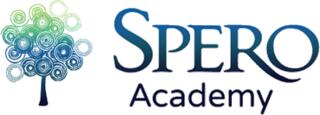
At Spero Academy, we strive to provide a highly individualized educational environment for students with autism and other developmental disorders. Part of the process of personalization involves identifying the child’s unique learning style. Studies have shown that children learn best when they are allowed to engage with material through their preferred style.
Understanding the learning style a student favors can help our teachers customize lessons accordingly to support the student’s learning process. Discovering a student’s learning style is also essential for building trust and connection between the student and teacher – which is foundational for a student’s success.
Although there is a shortage of research around the concept of learning styles as they relate to students with autism, we know from observation that children with autism tend to favor one learning style over others when working to make sense of the world and absorb new knowledge. Our goal here at Spero is to expose students to multiple learning styles and teaching methods in order to identify which one each student responds to best.
Are People With Autism Visual Learners?
Common wisdom passed around the autism community tell us that people with autism are predominantly visual learners who “think in pictures.” However, a recent study casts this assumption into doubt.
In the study, children with autism and typically developing children were seated in front of an eye-tracking computer and given a set of common objects. They watched a video of a teacher giving instructions for simple tasks to perform with the objects while the computer tracked their eye movements. In one round, the video included pictures illustrating the instructions, while in a second round, there were no additional pictures.
No difference was found in the way the children with autism tracked the images compared to the other children. In fact, when the researchers compared performance on the tasks when pictures were used to illustrate the instructions to when they weren’t, the typically developing children performed better with the pictures – not the children with autism. Though this was just one study, these results signal that children with autism likely do not necessarily have a preference for visual learning.
How to Identify Learning Styles in Students with Autism
Learning styles are identified through observing the child in the classroom. The teacher plays close attention to how the child engages with objects, other students, and the environment around them. These are some of the cues we use to identify learning styles in students with autism.
-
Auditory Learning – Children who are auditory learners will prefer hearing directions and concepts explained aloud. They might not make as much eye contact or engage by looking at the board or handouts during class, but may be more verbal and/or conversational and show extra interest in listening to music, audiobooks, or radio. You may even observe that they don’t appear to be paying attention when the teacher is talking – but it doesn’t mean they’re not listening.
-
Kinesthetic Learning – Students who are kinesthetic learners tend to learn best and engage most by touching and doing. They gravitate to hands-on learning activities such as projects, object manipulation, playing games, and anything that gets them up and moving. You can identify a kinesthetic learner because you’ll see them constantly picking things up or touching things around the classroom.
-
Visual Learning – You’ll notice that visual learners will pay special attention whenever class instruction involves videos, pictures, or other presentations. They may be more likely to not be as engaged during lectures or oral instruction but will engage actively with books, computers, or televisions, even without the sound on. Written instructions may be more effective than oral for visual learners.
Learning Styles and Autism in the Classroom
Students with a strong preference for one learning style may struggle to master material without modifications made to lesson plans or teaching methods. The frustrations a child experiences in response to receiving information in methods outside of their preferred style can also lead to negative behaviors in the classroom.
In larger public schools, there is often not enough resources for such modifications to be made, which is one reason that many children with autism find it challenging to succeed in those educational settings. We’re grateful that at Spero Academy, we do have the resources to provide a personalized educational experience that supports individual learning styles within the classroom.
Assessing and teaching to a student’s individual learning style not only supports their educational growth and academic success, but also decreases the negative behaviors that may arise from resistance to learning and builds confidence in the classroom and beyond.

